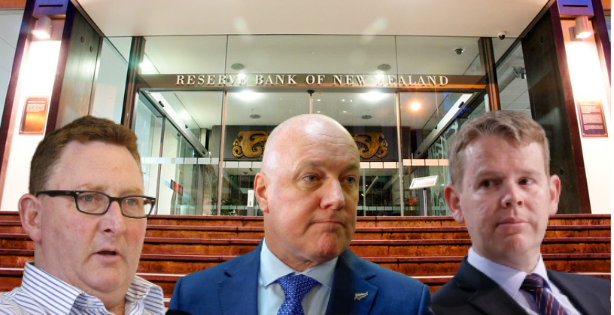At the beginning of the inflation crisis in 2021, and through to its peak in 2022, the official unemployment rate was low: 3.2 to 3.3 percent. Since then, according to the latest figures from Statistics NZ, the unemployment rate has steadily risen and stood at 5.1 percent by the end of 2024. Joblessness is causing untold misery for 156,000 workers and their families. This turnaround in unemployment has been “achieved” deliberately by policies of successive governments and their creature the Reserve Bank.
When under the Labour government the Reserve Bank was regularly raising the Official Cash Rate in their bid to bring down price inflation, it candidly admitted that it was aiming to increase unemployment because the low level of unemployment was “unsustainable.”
The government’s and Reserve Bank’s policies were to engineer an economic downturn by raising interest rates, making cuts in public spending, and holding down pay rises in the public sector to below price inflation. The prime objective of these policies was to increase unemployment and thereby exert downwards pressure on pay in the private sector and public sector alike.
When the unemployment rate was very low, employers in some sectors of the economy were having to offer higher wages to compete in hiring scarce workers. That was an unacceptable state of affairs as far as the capitalist class was concerned. It has always been their objective to have high unemployment, a “reserve army of labour”, in order to have a pool of workers available in case of economic boom and otherwise deter employed workers from fighting for pay and conditions.
To put it simply, it has been the policy of successive governments to alter the playing field in favour of the ruling capitalist class’s profitability to the detriment of the working class living standards. In this regard, the only difference in the passing from Hipkins’ Labour government to Luxon’s rightwing coalition has been in degree. Luxon’s government has been much more aggressive in slashing public spending than was Labour. However, that should not prevent us from criticising Labour’s record when in power.
The monetarist policies followed by Labour and the Right to cool down the economy have succeeded. The economy shrank in the latest two quarters for which there are official statistics. In the year to September 2024, GDP was practically static in registering a mere 0.1 percent rise. When we get the figures to the end of 2024, the annual rate of GDP will show as being in negative territory.
Wage increases have been holding up. By the end of 2024 wages were increasing at 3.3 percent across the whole economy, whereas the Consumers Price Index increase over the same period was 2.2 percent. However, the effects of higher unemployment on depressing pay may yet to be seen.
It is by no means inevitable that the capitalist class’s nefarious aims will be reached. All depends on the combativeness of workers, and students, in fighting back politically and industrially. Unions in the health services have frequently taken strike action ever since Luxon and his crew came to power. Mass demonstrations by the community have taken place in Ōtepoti/Dunedin against cutting back on a new hospital. Thanks to this level of resistance, the health sector has been a source of headaches for the government. The sacking of Shane Reti and his replacement as Health Minister by Simeon Brown is a reflection of their turmoil.
The government is increasingly looking like a one-term affair. This is largely due to the resistance to its attacks on Māori. The more fronts of struggle that open up against Luxon, Seymour and Peters the better to ensure they are kicked out of office next year, if not before. And, importantly, participation in those struggles teaches the working class that they have their own power.
Image Credit: “Reserve Bank of New Zealand” is licensed under CC BY 2.0









